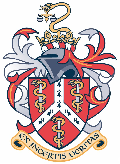Research Subcommittee
Research Subcommittee Meeting Dates
November 2024 (date to be confirmed)
Research Subcommittee Members
The current Chair of the Research Subcommittee is Prof. Michael D. Freeman.
Should you like to contact the chair please send an email to forensic.medicine@fflm.ac.uk.
Committee members
| Dr Sacha Shillingford-Cammock | Dr. Amandeep Ranu |
| Prof. Michael D. Freeman (Chair) | Dr. Emmeline Brew-Graves |
| Prof. Felicity Goodyear-Smith | Dr. Dina Ibrahim |
| Dr. Wendy Gray | Dr. Arlene Boroda |
| Dr. Sheila Paul | |
Terms of Reference
|
|
Papers of Interest
One of the goals of the Research Subcommittee is to regularly highlight and share relevant research and papers of interest to FFLM members.
Each month a different paper of interest will be listed below. We are interested in suggestions by members of recent research of note in forensic medicine. If you know of a paper that you would like to see featured, or if you have published a paper that you would like to share, please contact forensic.medicine@fflm.ac.uk (open access papers are preferable, but not required).
Current Paper Of Interest
Occult blunt craniocerebral trauma in an infant subsequently attributed to a parental fall
Tan L, Charlwood C, and Byard RW. Acta Paediatrica. March, 2022; DOI:10.111/apa.16327.
Tan and colleagues describe a three-month-old boy who was found unresponsive in his bed by his mother, was brought to hospital and died shortly afterwards. An autopsy revealed a head injury, including a linear skull fracture, with overlying subgaleal hemorrhage and underlying epidural hemorrhage, brain swelling, and retinal hemorrhage. Suspicion of abuse fell on the mother, who was interviewed by police. She recalled having fallen having tripped on a drain in the parking garage at her residence 16 hours prior to finding the baby unresponsive. She was carrying the child in a front sling, and as she fell forward his head struck the concrete floor. The baby cried briefly and then seemed to return to normal. The investigation was concluded once the surveillance video was reviewed, which showed the incident occurring as the mother had described.
This brief but important case study is illustrative of several contentious issues in forensic medicine generally, and forensic pathology specifically. First, there can be a temptation to relate more serious injuries in non-ambulatory children (i.e., < 1 year of age) to intentional trauma, which in turn is balanced by a higher degree of disbelief in a caregiver’s explanation of the circumstances of an injury. It was fortuitous, for the baby’s unfortunate mother, that her fall was captured by surveillance video, as an authoritative (but entirely speculative) opinion by a pediatric abuse specialist or forensic pathologist that the injury was very unlikely to have occurred as the mother claimed would have been sufficient to result in her being charged with a crime. Second, another factor that heightens suspicion of abuse is the caregiver claim that a child had an extended period of lucency after the reported unintentional trauma, as there can be an unwarranted belief that a head impact that resulted in a fracture and intracranial hemorrhage must have resulted in an instantaneous loss of consciousness. Third, the finding that injury is exclusive to the head, and that there are no additional injuries consistent with abuse must be considered when attempting to correlate an injury pattern with intentional versus unintentional abuse. A final medicolegal issue to consider is whether the fall that resulted in the baby’s fatal injuries was the mother’s fault, or due to an excessive tripping hazard attributable to the drain installation, design, or position.
Click here to read the full paper.
